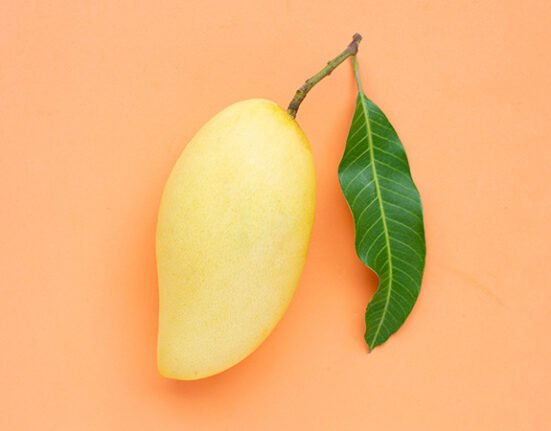In today’s fast-paced, technology-driven society, children are frequently exposed to elevated levels of stress and anxiety. Academic pressures, social challenges, and other stressors can negatively impact their mental health. Fortunately, a simple and natural solution exists to mitigate some of this stress and anxiety: incorporating indoor plants into their living environments.
Research has demonstrated that indoor plants have a calming and soothing effect on individuals, making them an excellent addition to any child’s space. Beyond adding a touch of nature to indoor areas, indoor plants also have the potential to enhance children’s mental wellbeing.
Key Takeaways
- Indoor plants can help reduce stress and anxiety in children by creating a calming environment.
- The benefits of indoor plants for children’s mental health include improved mood and concentration.
- Some of the best indoor plants for stress relief in children include lavender, aloe vera, and snake plant.
- Indoor plants can create a calming environment for children by purifying the air and providing a sense of nature indoors.
- The science behind how indoor plants reduce stress and anxiety lies in their ability to reduce cortisol levels and improve air quality.
Benefits of Indoor Plants for Children’s Mental Health
Improved Air Quality for Better Wellbeing
In addition to their mental health benefits, indoor plants can also improve air quality by removing toxins and increasing oxygen levels, which can have a positive impact on overall wellbeing.
Teaching Responsibility and Boosting Confidence
Caring for indoor plants can teach children valuable life skills, such as responsibility and nurturing. This can provide a sense of accomplishment, which can boost their self-esteem and confidence.
Creating a Nurturing Environment
Overall, the presence of indoor plants in children’s living spaces can create a nurturing and calming environment that promotes mental health and wellbeing. By incorporating indoor plants into their daily lives, children can thrive in a healthy and supportive atmosphere.
Best Indoor Plants for Stress Relief in Children
When it comes to choosing indoor plants for stress relief in children, there are several options to consider. One popular choice is the snake plant, also known as mother-in-law’s tongue, which is known for its ability to purify the air and thrive in low light conditions. Another excellent option is the peace lily, which not only improves air quality but also adds a touch of elegance to any space.
The spider plant is another great choice, as it is easy to care for and produces “baby” plants that can be propagated and shared with others. Additionally, the Boston fern is a classic choice for its lush foliage and air-purifying properties. These are just a few examples of indoor plants that can help reduce stress and anxiety in children, but there are many other options to explore based on personal preferences and living conditions.
How Indoor Plants Can Create a Calming Environment for Children
| Plant Name | Benefits |
|---|---|
| Lavender | Calming aroma, reduces anxiety |
| Aloe Vera | Purifies air, soothing presence |
| Spider Plant | Improves air quality, easy to care for |
| Snake Plant | Filters air, low maintenance |
The presence of indoor plants can create a calming environment for children in several ways. Firstly, the visual appeal of greenery can have a soothing effect on the mind, helping to reduce feelings of stress and anxiety. Additionally, caring for indoor plants can provide children with a sense of purpose and connection to nature, which can be grounding and comforting.
The act of watering, pruning, and tending to plants can also serve as a form of mindfulness practice, allowing children to focus on the present moment and cultivate a sense of calm. Furthermore, the improved air quality that indoor plants provide can have a direct impact on children’s physical health, which in turn can contribute to their overall sense of wellbeing. By creating a nurturing and peaceful environment with the help of indoor plants, children can find refuge from the demands of daily life and experience a greater sense of tranquility.
The Science Behind How Indoor Plants Reduce Stress and Anxiety
The science behind how indoor plants reduce stress and anxiety lies in their ability to affect the body and mind on a physiological level. Studies have shown that simply being in the presence of indoor plants can lower blood pressure, reduce muscle tension, and decrease the production of stress hormones such as cortisol. This is due in part to the visual appeal of greenery, which has been shown to have a calming effect on the nervous system.
Additionally, the act of caring for indoor plants can promote relaxation and mindfulness, which can help alleviate feelings of stress and anxiety. Furthermore, the air-purifying properties of indoor plants can improve air quality, leading to better respiratory health and overall wellbeing. The combination of these factors makes indoor plants a powerful tool for reducing stress and anxiety in children and promoting mental health.
Tips for Choosing and Caring for Indoor Plants to Promote Children’s Wellbeing
Factors to Consider
When choosing indoor plants to promote children’s wellbeing, it’s essential to consider factors such as light levels, space constraints, and ease of care. Low-maintenance plants like succulents and cacti are ideal for busy households or for children who may not have much experience with plant care.
Considering Allergies and Sensitivities
It’s also crucial to consider any potential allergies or sensitivities that children may have to certain types of plants.
Caring for Indoor Plants
When caring for indoor plants, it’s vital to provide them with adequate light, water, and nutrients to ensure their health and longevity. Involving children in the care of indoor plants can be a fun and educational experience that teaches them about responsibility and the natural world.
Promoting Children’s Wellbeing
By choosing the right plants and providing proper care, indoor plants can become a valuable tool for promoting children’s wellbeing.
Creative Ways to Incorporate Indoor Plants into Children’s Living Spaces
There are countless creative ways to incorporate indoor plants into children’s living spaces. One idea is to create a “green corner” in a room by grouping several plants together on a shelf or table. This not only adds visual interest but also creates a designated space for relaxation and reflection.
Hanging plants such as pothos or ivy can add a touch of whimsy to a child’s room while also making use of vertical space. Another creative idea is to use colorful pots or planters to add personality and flair to indoor plant displays. Additionally, involving children in the process of choosing and caring for indoor plants can foster a sense of ownership and pride in their living environment.
By thinking outside the box and getting creative with plant placement and presentation, indoor plants can become an integral part of children’s living spaces.
Case Studies and Success Stories of Indoor Plants Improving Children’s Mental Health
There are numerous case studies and success stories that highlight the positive impact of indoor plants on children’s mental health. For example, a study conducted by researchers at the University of Washington found that classrooms with indoor plants had lower levels of stress among students compared to classrooms without greenery. In another study published in the Journal of Environmental Psychology, researchers found that simply looking at images of nature, including indoor plants, had a calming effect on children with ADHD.
Additionally, there are countless anecdotal accounts from parents and educators who have witnessed the positive effects of indoor plants on children’s mental wellbeing. These case studies and success stories serve as compelling evidence of the power of indoor plants to improve children’s mental health and create nurturing environments. In conclusion, indoor plants have the potential to significantly impact children’s mental health by reducing stress and anxiety and creating calming environments.
The benefits of indoor plants for children’s mental wellbeing are supported by scientific research as well as real-life success stories. By choosing the right plants, providing proper care, and getting creative with their placement, parents and educators can harness the power of indoor plants to promote children’s mental health. Whether it’s through the visual appeal of greenery, the act of caring for plants, or the improved air quality they provide, indoor plants offer a natural and effective way to support children’s mental wellbeing in today’s fast-paced world.
FAQs
What are indoor plants that can help reduce stress and anxiety in children?
Some indoor plants that can help reduce stress and anxiety in children include lavender, chamomile, aloe vera, snake plant, and peace lily.
How do indoor plants help reduce stress and anxiety in children?
Indoor plants can help reduce stress and anxiety in children by purifying the air, providing a calming and soothing environment, and promoting a sense of well-being.
Are there any specific care instructions for indoor plants that can help reduce stress and anxiety in children?
Yes, it is important to provide proper care for these indoor plants, including regular watering, adequate sunlight, and proper soil conditions to ensure their health and effectiveness in reducing stress and anxiety.
Are there any indoor plants that should be avoided around children due to potential allergies or toxicity?
Yes, some indoor plants such as pollen-producing plants or those with toxic properties should be avoided around children, especially if they have allergies or are prone to ingesting non-food items. It is important to research and choose indoor plants that are safe for children.






